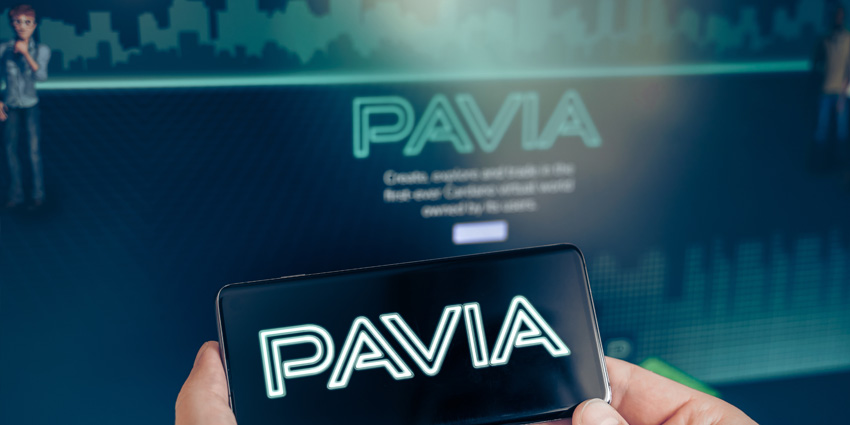As the idea of the Metaverse matures, we are witnessing the rise of new platforms in this space. A February 2022 survey from Variety Intelligence Platform found that more than 50 percent of US consumers are aware of the technology, indicating growing interest and eventually, demand.
The Pavia platform is among the newest launches in this segment, with strong potential to tap into user and investor interest. Pavia is unique as it is based on the Cardano blockchain protocol, which has not been applied to Metaverse development so far.
What Is Cardano?
Cardano is an open-source blockchain platform that Ethereum Co-Founder Charles Hoskinson developed in 2015. It claims to be the first blockchain protocol founded on peer-reviewed research and developed via evidence-based methodologies.
It also uses proof-of-stake protocols to establish consensus across the blockchain, diverging from most other systems like Ethereum, which used to rely on a proof work system until 2021.
In a proof of stake system, validators are selected at random across the blockchain instead of checking every node, which is the case for proof-of-work, making the former much less resource-intensive and energy-efficient.
Blockchain is notorious for consuming extremely high amounts of energy. For instance, the Cambridge Center for Alternative Finance found that Bitcoin consumes around 110 Terawatt Hours per year.
A proof-of-stake system would address this by reducing energy requirements and making blockchain-based solutions like cryptocurrency, non-fungible tokens (NFTs), and metaverse platforms sustainable long-term. This unique characteristic makes Cardano a powerful underlying architecture for metaverse innovations like Pavia.
What Is Pavia?
Pavia is the first-ever metaverse to launch on the Cardano blockchain, taking inspiration from the Italian city of Pavia, which was home to Gerolamo Cardano in the 1500s.
The platform comprises several thousand land parcels held by a community of 17,000+ landowners. Pavia is also still in its infancy, and its parcels and tokens are available only through the occasional flash sale.
While the exact layout of Pavia is yet to be generally available (apart from a basic map), it will have six distinct areas — land, sand, sea, deep sea, mountain, and forest scenes — similarly to the 21 levels that make up another metaverse platform, Bloktopia.
Pavia aims to reduce the barriers to entry to metaverse adoption and development. First, it will have lower gas fees than most platforms, which are the payments that users must make to compensate for the computing energy that a blockchain needs.
Second, it will also have ready-to-use builders, marketplaces, scenes, and deployment tools that anyone can use, without special technical expertise.
Key Features of Pavia, the Cardano Metaverse Platform
Pavia offers the following key capabilities:
The use of proof of stake protocol
As mentioned, Pavia leverages proof-of-stake protocols as its core underlying technology. This makes it differ from The Sandbox and Decentraland, which are both built on Ethereum, and has only recently transitioned out of a proof of work system. Once fully launched, Pavia will be energy efficient and sustainable.
Pavia compatible assets (PCA)
Pavia-compatible assets (PCAs) are the central building blocks of the Metaverse. The platform aims to offer maximum interoperability for all its virtual assets, which is a challenging task. It will provide users with PC builder tools that make it easy for any individual to develop compatible assets for the Metaverse platform.
Scenes in Pavia
Scenes are a user enablement feature in Pavia. One can use and reuse a scene for 3D artifact development, particularly when building PCAs like virtual stores, tourist destinations, buildings, VR games, etc. Assets inside the Pavia metaverse are called Cardano NFTs, or cNFTs, and VR worlds built using the scenes could also count as unique cNFTs.
Avatar interoperability
The platform’s focus on interoperability also extends to the 3D avatars of users. Interestingly, Pavia has gone down the animated avatar route rather than the photorealistic direction, meaning that users can enjoy incredible flexibility when designing and accessorizing their virtual appearance. To drive avatar interoperability, the platform has partnered with readyplayer.me.
Community-developed Pavia tools
Tools are user enablement aids for Pavia, designed by the platform’s community of developers. Some of the tools currently available for use include:
- CNFT.IO – a marketplace for cNFTs
- OpenCNFT – a project that provides data on Pavia and Cardano Metaverse trends
- Price Checker Tool – to search for Pavia land parcels within a budget
- Community Hub – a forum to suggest and vote on Pavia Improvement Proposals (PIPs)
- Heat Map – to show in-demand parcels from Pavia land sales and distribution data
- When Can You Start Using Pavia and the Cardano Metaverse?
The land for Pavia is under the minting process and we are at the very early stages of development. The metaverse platform is being built by a team of 18 employees who make up Pavia Corporation, along with a large community of developers participating in the project.
The company breaks down the roadmap into several stages, starting from the development of PCAs to the platform’s first anniversary. As per this roadmap, Pavia, the first Cardano metaverse, will launch to general availability sometime in mid-2022.
By the end of this year, users can expect full integration with the wider metaverse via the interoperability principles the team follows, but for now, the Cardano blockchain and its cryptocurrency, ADA, are available to users and investors.
Pavia Trends for 2022
Market analysts predict a positive outlook for Pavia and the entire Cardano ecosystem in 2022. Certainly, the promise of energy efficiency and wide interoperability are attractive features in a market with numerous metaverse platforms at various stages of development.
However, users cannot visit their land parcels yet, and the platform will not support content deployment on the land for at least the next quarter. Overall, Pavia offers a simple, easy-to-use, and democratized option for those looking to enter the Metaverse with minimal barriers.






